Email: China's Advanced Joint Manipulation - Angela Lee Vs Xiong Jing Nan - Fight I! (14.7.2024)7/14/2024 This is the first of a trilogy of absolute classic fights! Jing Nan (竞楠) is known in the West as the "Punching Panda". A Panda Bear is known in the Chinese language as "Da Xiong Mao" (大熊猫) or "Great Bear Cat". It seems that the ideogram "熊" (Xiong) - or "Bear" - has been added as a prefix to her name. Angela Lee - although ethnically "Chinese" - was born in Singapore and has since migrated to the West - becoming steeped in the Western interpretation of Asian martial arts. Jing Nan, however, is from Mainland China and is steeped within the martial traditions of that country! Perhaps she is trained in "Bear" qigong - similar to the "Bear" being the animal spirit that permeates our Hakka family style. Whatever the case, the idea of joints being strengthened so that no pain is felt when pressure is applied - exists in our style and the example seen above should be closely studied. Angela Lee expected her opponent to "give-in" once the arm-lock was applied (typical of the Western MMA attitude) - but seems to have psychologically and physically collapsed (despite a rest between rounds) when this was not the case! The Chinese diaspora spans the world. China, however, possesses over a billion people and is the spiritual and material source of ALL Chinese culture! Taiwan is a US colony that can be dismissed for the irrelevancy that it is. A similar assessment can be applied to post-1945 Japan and South Korea. Mainland Chinese fighters are tough, hard and highly disruptive of the Western dominance of Asian martial arts. Indeed, China is an important statement of indigenous martial culture in the face of a racialised misrepresentation. Whatever the case, the Western attitudes (which include the Japanese influence in Brazilian Jiujitsu) imbued within the mind-set and physical technique demonstrated by Angela Lee is thoroughly overturned and defeated in this fight! Jing Nan is a credit to China and the martial arts world!
0 Comments
Dear Charles! Coxinga (1624-1662) lived about 100-years after Yasuke in Japan. However, he was half-Japanese himself and possessed a personal bodyguard known as the 'Black Guard' comprised of African men freed from Portuguese slavery by Chinese forces. A pictures survives of one of these African men. Coxinga is famous for taking-on - and defeating the Dutch forces on Taiwan - and was granted that staus of 'King' of that island by the Ming Emperor of China. Coxinga was a Ming Dynasty General - the child of a Chinese man and a Japanese woman! The Chinese language texts make much of the Dutch being defeated. This may have been the first military engagement between China and the West. Perhaps the Black Guard had a pivotal role. The drawn picture shows the African man carrying the Guan Dao (the blade of Lord Guan) - a high status weapon! Portuguese slavery must have been prolific! I once visited Portugal for a holiday and was astonished to find their tour guides talking about their slave-trading past with a sense of pride! Britain takes a different path and tends to deny it! Best Wishes Adrian
These ideograms are written in Old Chinese Script - but pronounced using Japanese and Okinawan language. [square] brackets = Chinese pronunciations (round) brackets = Japanese-Okinawan pronunciations a) 補 (Ho) = [bu3] - increase, aid, repair, supplement, mend, compensate and nourish b) 助 (Jo) = [zhu4] - help, support, augment and assist c) 運 (Un) = [yun4] - transport, carry, utilise, revolve, buoyancy and fate d) 動 (Do) = [dong4] - move, act, alter, momentum and touch It seems that the four ideograms are deployed using two couplets: 1) 補助 (Hojo) = supplement and auxiliary [Buzhu] 2) 運動 (Undo) = sporting and competitive vigorous movement [Yundong] The following is a contemporary webpage from Taiwan (auto-translated into 'English' entitled '法規內容-教育部運動發展基金補助各級學校運動團隊作業要點') continuously uses the term '補助運動' (Hojo Undo - Buzhu Yundong) - which is used exclusively to refer to 'supplementary sporting exercises': The inclusion of the terms 'buoyancy', 'touch', 'transport', 'momentum' and 'fate' - all suggest an 'internal' management of the 'external' (physical) body (through the attainment of an 'effortless momentum'). Therefore, although this term is common-place in China - the mastery it refers to is certainly not common-place. On the one-hand, a man or woman might train to win a Gold Medal or World Title - but these achievements (as important as they are for the 'Nation') only fall inside the 'external' component of this term. On the other-hand, Karate-Do Styles such as Goju Ryu exemplify the principle of the 'internal' superseding the 'external' - even though a lifetime must be spent subsumed in the 'external' whilst attempting to understand this relationship and transition into the infinitely powerful 'internal' position. Of course, ultimately, both the 'external' and the 'internal' integrate into a perfect, functioning 'whole' - as can be seen during a perfect execution of a Kata.
Dear Tony
I have been studying rather 'involved' Chinese language texts regarding the DNA distribution of populations throughout China - focusing on the Fujian area. I have carefully read through and translated the following academic text(s) - word-for-word - so that the data is accurate and can be used for academic reference. Modern Chinese geneticists tend to seek Western verification of their findings so that a joint consensus can be built. The following extract is revealing: "Molecular biological research has discovered that some 3,000-2,000 years ago the ancient population of Taiwan possessed a close genetic relationship to the following two populations of Mainland China: a) The Zhuang-Dong (壮侗) speaking population. b) The Austronesians (南岛语 - Nan Dao Yu) - genetically constructed through the 'mixing' of (non-Chinese) Northern agricultural people. The genetic ancestors of these two groups expanded southward, spreading Austronesian and Zhuang-Dong linguistic and genetic markers amongst the Austro-Asiatic populations they encountered.” Furthermore, Zhang Huqin (张虎勤) told reporters that Peter Bellwood’s research has also accurately charted this genetic expansion from South China, through Taiwan and onward toward the island populations of Oceania. These ancient people originated in what is today the 'Fujian' province of Southeast China around 5,000 years ago. They spread to Taiwan (and nearby islands) between 5,000-3,000 years ago and then onwards to the Pacific Islands around 3,000-1,000 years.' '“分子生物学研究发现3000—2000年前台湾地区的古人与大陆壮侗语人群有紧密的遗传关系,南岛语人群形成过程中还受到来自北方农业人群的基因混合影响,南岛和壮侗的祖先人群向南扩张,传播南岛语和壮侗语,并对南亚语人群有遗传贡献。”张虎勤告诉记者,Peter Bellwood研究发现了“南岛语”从华南的台湾到大洋洲扩张路线,即距今5000年以前从以闽台为中心的中国东南海岸出发,5000—3000年间扩张到南海海域的东南亚群岛,3000—1000年间传播到太平洋群岛。' Reference: [China Social Sciences Network] Ancient DNA technology analyses the reproduction and migration of Chinese civilization - Interview with Professor Zhang Huqin, School of Life Science and Technology, Xi'an Jiaotong University - Source: Jiaotong University News Date : 2022-10-06 As for three (3) genetic haplogroups that comprise the majority (90%) of the modern Fujian population (with the other 10% being closely genetically related despite diverse cultural differences) - I have discovered the following data from work carried-out at Fudan University: 1) O-M119 - Yi-Yue (夷越) Group - linked to the 'Dong-Yi' (东夷) and 'Bai-Yue' (百越) ethnic groups. 2) O-M268 - Miao-Man (苗蛮) Group - linked to 'Nannan' (南蛮) and 'Miao-Yao' (苗瑶) ethnic groups. 3) O-M122 - Han-Cang (汉藏) Sino-Tibetan Group - linked to the 'Hua-Xia' (华夏), the 'Cang' (藏) Tibetan and the 'Qiang' (羌). '根据复旦大学分子人类学的研究成果,在中国大地上,大概可以分成三个主要的族群,他们都是中国人乃至东亚人的主要构成基因,分别为夷越集团的O1(东夷和百越,O-M119)、苗蛮集团的O2(南蛮和苗瑶,O-M268)和汉藏集团的O3(华夏和藏、羌等,O-M122)。这三支几乎占到了现有汉族的九成以上,甚至西南、东南的少数民族也是如此,可以说是中华民族的基因共源(如独龙族O3占到100%,部分高山族O1占到100%)。' Reference: Where did the Fujianese's Minyue genes go? Incidentally, the 'Chinese' (Hakka) genes I carry are linked to the 'Qiang' ethnic group (the Tibetan presence in Fujian might explain why Tibetan gongfu is said to be practiced in the area. The Tibetans invaded larges swathes of Southern and Western China around 1,000 years ago and presumably spread out from there). My partner's ethnic Chinese genes (Hakka) are linked to the Evenk people of Siberia. Culture and language link groups of people together despite their DNA sometimes being vastly different! All genetic studies state that Fujian was substantially and permanently settled 'North to South' - but that other (smaller populations) of people traversed into the area from the West and East as well as by boat from the South - many 'sharing' the same genes as those calling themselves the 'Chinese'. As these populations were unstable - they often never survived or moved on to other areas, etc. Thanks Adrian Source: China Taiwan Network China Taiwan Net - August 30th, 2016 - Shiyan News (Reporter Zhao Miaoqing [赵苗青]): On the afternoon of August 29th, 2016 - organized by the Taiwan Affairs Office of Hubei Province – we participated in the ‘Use Your Wisdom-Eye to Understand the Foundation’ intuitive, which formed part of the ‘10th Cross-Strait Media Jingchu Travel Collective Activities’! This time the focus was on ‘Wudang Mountain’ (武当山 - Wu Dang Shan). The members of the team visited the following places of interest amongst many others: a) Wudang Mountain Geological Museum (武当山地质博物馆) b) Wudang Mountain Special Zone Planning Hall (武当山特区规划馆) c) Wudang Mountain Museum (武当山博物馆) d) Wudang Mountain Museum (武当山博物馆) The Wudang Mountain is a Daoist area of immense beauty designed to relax all inner and outer tension whilst generating unity, harmony, balance, peace and perfection! By being present in this place, the mind, body and spirit experience a ‘purification’ process (premised upon breathing deeply and fully the pure air), whilst the Daoist practitioners and Masters see right ‘through’ each and every person who happens to walk (or manifest) within their vision (or sensory sphere)! Of course, many people who visit have disabilities – just as some of the Daoist priests and Masters do! Everyone (and every living creature) is welcome and all that is felt is an uplifting ‘compassion’ and a ‘healing’ love for life and existence! Many visitors report a ‘new’ agility and ‘renewal’ of mind and body with the spirit (consciousness) being expansive and all-embracing! The area (and experience) is grand and majestic! The ‘qi’ (气) energy is truly ‘great’ and ‘uplifting’! An interesting point the Daoist Masters and Daoist priests wanted to emphasise is that ‘everyone’ is welcome to participate in the ‘humanistic’ quality of Wudang Mountain – the Daoism of which does not discriminate in anyway and which accepts ALL beings without question or condition! Inside the Wudang Mountains Special Administrative Region the sand-drawing table attracted media attention from both sides of the Straits! Everyone was amazed at the grandeur of its scale! On the last stop of the day, the team visited Jade Emptiness Temple - known as the ‘Forbidden City’ of the South! The Jade Emptiness Temple is located at the Northern foot of Wudang Mountain, within a basin area of 5 square kilometres. There are four imperial stele pavilions situated inside and outside the Temple – perfectly positioned so that each faces the other in a majestic manner (despite their differences in size)! In an area directly in front of the Jade Emptiness Temple, Master Yuan Xiugang (袁修钢) - the 15th Generations Lineage Descendent of the Wudang San Feng (三丰) School of ‘Internal’ (內 - Nei) Martial Arts – led a group of disciples through an impressive display of bodily movements of the arms, legs and torso! As a Daoist Priest, he responsible for the preservation and transmission of these ancient Daoist martial arts which can be spectacular to encounter! "The martial arts practiced on both sides of the strait share the same common cultural origin. There are many Taiwanese compatriots who come to Wudang Mountain to learn martial arts every year - but there are not many Taiwanese students who commit themselves fulltime to learning Wudang martial arts over the longterm and place themselves in a position to inherit the Wudang martial arts lineages - as this would be something we would definitely encourage." Explained Master Yuan Xiugang in a joint interview with media from both sides of the strait. When asked about the exchange of martial arts between the two sides of the Taiwan Strait, Daoist Master Yuan Xiugang said: ‘Since 1994, cross-strait martial arts exchanges have become more frequent. In the past, Taiwanese people mostly conducted Daoist cultural exchanges in the form of ‘incense’ groups (paying respect at various holy places). After more than 20 years of exchanges, however, the cross-strait martial arts have gained a deeper understanding of each other.’ He hopes to strengthen and deepen the cultural exchanges between young people on both sides of the straits using the Wudang ‘Internal’ martial arts tradition as the vehicle and hopes that more and more young people will systematically learn Wudang martial arts and pass on the complete (Internal) lineages in their hometowns and living locations. According to reports, Wudang martial arts conform to the operating state of the inner body and the reality of the ‘natural’ outer world. Therefore, when practicing these ‘internal’ martial arts, the disciples learn to ‘drop’ or ‘sink’ (沉 - Chen) their bodyweight into (and through) the ground they are standing upon – always being physically (and psychologically) firm and stable (like a ‘Pine Tree’) - when in a state of movement or stillness! The outside of the body becomes noticeably pliable and ‘soft’ (柔 - Rou) whilst the inside of the body becomes ‘toughened’ or ‘hardened’ (刚 - Gang) in the sense that if impressed or impacted in any way from the outside – the incoming force is absorbed and dissipated harmlessly away from the inner organs and lacks the piercing power to damage the joints or bones, etc. Wudang martial arts, however, are about the developmental health of the mind, body and spirit, protecting the natural environment and the REMOVAL of all conflict in the mind, body and environment, and between individuals, species and different systems of life choices, creativity and artistic expressions! With practice, Wudang martial arts practitioners learn to move about as if they are floating like clouds or flowing upon water! These abilities are considered unique within Chinese martial arts! This is why in 2006, Wudang martial arts were selected as part of the first batch of intangible cultural heritage arts considered truly representative of China’s historical genius and creativity! This process led the collection and categorisation of all such Daoist activities that comprise the ‘Wudang Internal Family Fist Law’ (武当内家拳法 - Wu Dang Nei Jia Quan Fa)! There are around 30 different styles being taught and practiced on Wudang Mountain which include ‘Taijiquan’ (太極拳) and ‘Taiyi Five Phases Fist’ (太乙五行拳 - Tai Yi Wu Xing Quan)! There are also 9 types of ‘Qigong’ (气功) which have attracted a substantial amount of attention from home and abroad! Chinese Language Source: 问道武当 两岸媒体玉虚宫寻武术精髓(图)
2016年08月30日 09:30:00 来源:中国台湾网 中国台湾网8月30日十堰讯(记者 赵苗青) 8月29日下午,由湖北省台湾事务办公室举办的“借你慧眼看基地—--第十届海峡两岸媒体荆楚行”采风活动,聚焦武当山海峡两岸交流基地。 采风团成员先后参观了武当山地质博物馆、武当山特区规划馆、武当山博物馆、玉虚宫等景点,亲身感受武当山的秀美灵动、宏大气势雄伟,领略武当山的自然之美、人文之美。武当山特区规划馆内的规划沙盘图吸引两岸媒体人驻足观赏,大家纷纷惊叹于其规模的宏伟壮观。 当日最后一站,采风团一行参观了素有南方“故宫”之称的玉虚宫。玉虚宫位于武当山北麓,坐落在5平方公里的盆地之上,宫内外有四座御碑亭,巍然对峙,亭内置石雕赑屃驮御碑,大小不一。在玉虚宫前,武当山三丰派第十五代武术传人袁修钢道长带领着其弟子整齐划一地挥舞着拳脚,场面颇为壮观。“两岸武术同宗同源,每年来武当山学习武当武术的台湾同胞有很多,但是专业学习武当武术能够系统的传承武当武术的台湾学员不多。”袁修钢道长接受两岸媒体的联合采访时如此表示。 被问及两岸的武术交流情况时,袁修钢道长表示:从94年起两岸的武术交流开始比较频繁,以前的时候台湾民众多是以进香团的形式进行道教文化交流。两岸武术经过20多年的交流互相之间有了更加深刻的了解。他希望加强两岸青少年在武术方面的交流,希望能有越来越多的年轻人系统的学习武当武术然后将它完整的传承下去。 据悉,武当武术以其松沉自然、外柔内刚,行功走架如浮云流水的独特风格,在中华武林中独树一帜。2006年武当武术入选中国首批非物质文化遗产,挖掘整理出的武当内家拳法、武当太乙五行拳等有30多种,气功9种,引起海内外武术爱好者广泛关注。(完) Historical Contextualisation: How 4th Century CE Roman Coins Found Their Way to Okinawa! (7.9.2022)9/9/2022 The earliest Western mention of ‘China’ (as ‘Seres’ - Greek for ‘Land of Silk’) seems to be in the 4th century BCE work of the Greek physician and historian ‘Ctesias’ (Κτησίας) of Cnidus (now in Turkey) who was born c. 416 BCE. This is described in the 2008 Chinese language book entitled ‘中国与罗马 - Zhong Guo Yu Luoma) or ‘China and Rome’ written by the esteemed Mainland Chinese academic Qui Jin (丘进). In a book of anecdotes describing the inhabited regions of the world, Ctesias is quoted as saying, ‘The people of Seres and North India are said to be strong and tall in stature! It is said that some can grow as tall as 13 cubits! (a single ‘Coudee’ or ‘Cubit’ = approximately 0.5m). It is not uncommon for these people to live for 200 years!’ ‘赛里斯人和北印度人身材高大,甚至可以发现某些身高达13肘尺(Coudée,约合0.5米)的人。他们可以寿逾200岁。’ The modern science of archaeology – when applied around the world - tends to support the idea that both China and the Greek and Roman worlds possessed vague and hazy ideas regarding one another’s existence certainly during the early centuries BCE. We are on firmer ground during the year 97 CE, when it is recorded that the Eastern Han Dynasty of China attempted to send an emissary - named ‘Gan Ying’ (甘英) - to Rome but that his journey was blocked by the Parthians. Han Dynasty records further state that the Roman emperors Antoninus Pius (86-161 CE) and Marcus Aurelius (121-180 CE) both sent envoys from Rome to China. In the case of the latter, the Roman emissary reached China in 166 CE – landing at a place called ‘Rinan’ (日南) County before being escorted to Louyang! The Han Dynasty and the Roman Empire, however, conducted commercial trade prior to making direct political contact from around the 1st century CE (through third parties and middlemen, etc) using the maritime and land-based Silk Roads. The Han Dynasty exported fine silk to Rome, whilst the Romans exported glassware and equally high-quality clothing fabrics to the Han Dynasty. This early history is relevant when considering the interesting historical finds announced in the Japanese press during 2016! Around September 26th, 2016, The Japan Times (and many other publications) broadcast the story that Japanese archaeologists had been conducting exploratory excavations (since 2013) within the grounds of the ruined Katsuren Castle in Okinawa (which had existed between the 12th-15th centuries CE) located near Uruma City. On this day, however, things were a little different as Japanese archaeologist - Toshio Tsukamoto it was announced - had discovered four badly worn copper coins (measuring between 1.6 and 2 cm in diameter) thought to have been minted at in ancient Rome at some point during the 4th century CE. Hiroki Miyagi, an archaeologist at Okinawa International University, explained: "Katsuren Castle belonged to the Ryukyu Kingdom during the 14th and 15th centuries and was the only channel for trade between Japan and China. At that time, East Asian merchants mainly used Chinese ‘square-hole’ (方孔 - Fang Kong) money as currency, and Western currency was unknown in this part of the world. If Roman-era coins were circulating in Japan, it is speculated that this ancient currency may have flowed into the Ryukyu Kingdom from China or Southeast Asia.” It was also reported that one 17th century CE Ottoman Empire coin had been discovered during the ‘dig’, together with five other metallic objects also thought to be coins. Of course, what Hiroki Miyagi falls to mention is that when these coins were thought to have been deposited on the island - ‘Okinawa’ (or more properly ‘Liuqiu’) was part of China and not part of Japan! It was only from 1609 onwards following the Satsuma invasion that ‘Liuqiu’ became nominally a part of Japan – whilst its three Kings continued to send tribute to the Chinese emperor out of respect. It was only with the 1879 ‘annexation’ of ‘Liuqiu’ (and the surrounding islands) by the Imperial Japanese Army that ‘Liuqiu’ was renamed ‘Okinawa’ and the island chain it is a part of became known as ‘Ryukyu’ (the Japanese pronunciation of ‘Liuqiu’). When did ‘Liuqui’ become a distant part of the Chinese empire and when was this small island integrated into the umbrella that it is Chinese culture? Sui Dynasty (581-618 CE) records mention contact with an island referred to as ‘Liuqiuguo’ (流求國) - or the ‘Flow Attract’ Country (perhaps suggesting a country the tides of the South China Sea will take you toward quite naturally). This is recorded in the: a) ‘Sui Dynasty Historical Records’ (隋書 - Sui Shu) – with the relevant data entered as follows: b) Volume 81 - ‘Eastern Barbarian – List of Histories and Descriptions’ (東夷列傳 - Dong Yi Lie Chuan) c) Chapter 29 - ‘Chen Ling Biography’ (陳稜傳 - Chen Ling Chuan) c) Chapter 46 - ‘Flow Attract Country History and Description’ (流求國傳 - Liu Qiu Guo Chuan) d) Chapter 64 - ‘List of Histories and Descriptions’ (列傳 - Lie Chuan) This history records (and details) the Sui emperor ‘Yang’ (煬) [569-618 CE] who reigned 604-618 CE – and his mounting of a successful seaborne expedition to attack and conquer the distant island known as ‘Liuqiu’. Liuqiu (pronounced ‘Ryukyu’ in the Okinawan and Japanese languages) lies around 500 miles due East of the coast of Fujian province. This was not an act of wanton aggression upon the part of the Chinese State – but rather a policing action whereby Chinese villains and rebels had fled China and were carrying out pirate activities and other disruptive endeavours. Although some scholars have tried to suggest these records are discussing the island of Taiwan, the academic consensus is that Taiwan is far too big and far too close to Mainland China to serve as a safe haven for fleeing Chinese bandits, and is so close to the Chinese Mainland, that it does not fit the description of the difficulties the Chinese fleet had locating and navigating its way to the island of ‘Luiqiu’! Furthermore, no one in Taiwan had heard of the Chinese descriptive term of ‘Liuqiu’ - whereas in Okinawa the local people have referred to their island as ‘Ryukyu’ (‘Liuqiu’) for centuries! The Sui Dynasty Historical Record States: 1) 607 CE - During the second month of the third year of the reign of emperor Yang (607 CE) – the Cavalry Commander Zhu Kuan (朱寬) was ordered to travel eastward to visit and make contact with the people of ‘Liuqiu’! Due to the language barrier, however, all that was achieved was the kidnapping of one local person who was forcibly returned to China! 2) 608 CE - During the fourth year of the reign of emperor Yang (608 CE) - Cavalry Commander Zhu Kuan was ordered to lead a military expedition and invade the ‘Liuqiu’ island – but he refused to obey the order and instead ‘returned his cloth armour’! 3) 610 CE - During the sixth year of the reign of emperor Yang (610 CE) – a very large seaborne military expedition (consisting of 10,000 soldiers) was launched from Mainland China – led by General ‘Chen Ling’ (陳稜) and Senior Minister ‘Zhang Zhenzhou’ (張鎮州) - which was successful in traversing the rough seas, finding and landing on ‘Liuqiu’ island – where the local forces were met in combat and defeated! Thousands of men and women were captured and returned to Mainland China. 4) It is said that this third militarised seaborne expedition was the consequence of Chinese rebels that had: a) Defied and opposed the Sui Dynasty emperor before fleeing to ‘Liuqiu’, before b) Being pursued, confronted, apprehended and finally returned to the Mainland China to face trial. The Chinese name ‘Liuqiu’ was used during the Tang and Song Dynasties (referring to the Ryukyu Islands) and was even retained during the Islamic Yuan Dynasty (1271-1368 CE). Although ‘Liuqiu’ (流求) was retained as a place defined as being under the influence of the Chinese cultural umbrella – the Yuan Dynasty - however, altered the spelling of the name to the similar sounding ‘琉求’ (Liuqiu). This changed the usage of the traditional first ideogram of ‘流’ (liu2) [meaning ‘flow’ or ‘tradition’] and replaced it with the new ideogram of ‘琉’ (liu2) [which means ‘precious’]. This was only a very slight change – adding the beautifying particle ‘⺩’ (yu4) meaning ‘jade’ to the left-hand side of the ideogram – a typical Islamic gesture of respect and good will. Despite this recognition, the treacherous seas separating Mainland China from ‘Liuqiu’ meant that communication was spasmodic. Even though Japanese envoys routinely visited China – it was clear that the ‘Ryukyu’ Island were not considered part of Japan by the Japanese themselves - certainly not prior to the 17th century. All of this background information is required if the 2016 discovery of Roman coins on the island of Okinawa is to be properly contextualised and understood. During 1372 CE, the Ming emperor ‘Taizu’ (太祖) sent his envoy – Yang Zai (楊載) - to ‘Liuqiu’ to formalise diplomatic relations. King Zhongshan (中山 ) of the Ryukyu Islands agreed that a regular ‘Tribute’ (貢 - Gong) should be paid to the Chinese Court in exchange for military protection, political affiliation and cultural exchange (all favouring the Ryukyu people). A major problem hindering this arrangement was a) the distance of around 500 miles one way, and b) the unpredictable and terrible weather and rough seas! The Chinese Court attempted to solve this issue in 1392 CE by despatching the so-called thirty-six families (or ‘name clans’) from various areas of Fujian province to be resettled on the ‘Liuqiu’ island. This probably amounted to hundreds of men, women and children who were settled at a place termed ‘Kume Village’ or the ‘Chinese Village’. These people were chosen for their skills in growing, harvesting and sustaining forests (for producing wood), ship designing and ship building, as well as ship navigators and pilots! The purpose of this relocation was to establish efficient, open and permanent sea-lanes between ‘Liuqiu’ and Mainland China (mainly with the adjacent Fujian coast). With these people came many other important arts and crafts – including house building, animal husbandry, Chinese medicine, farming and various forms of Fujian martial arts. Of course, Chinese martial arts had been deployed on ‘Liuqiu’ since 607 CE, and it is thought a general transmission of these arts were made to the island from that time onward. As ‘Liuqiu’ people were considered ‘Chinese’ in the political sense, then in all likelihood it is plausible to assume that Mainland Chinese soldiers stationed on ‘Liuqiu’, and Chinese migrants living in ‘Liuqiu’ were willing to teach their martial arts to individuals outside of their immediate families (probably more so in the case of soldiers). From 1392 CE onwards, however, the Chinese settlers on ‘Liuqiu’ were acting under orders to relay as much Chinese cultural knowledge as possible to the local ‘Liuqiu’ people. This arrangement existed for 217 years without interruption until the Japanese ‘Satsuma’ invasion of the ‘Ryukyu’ Islands in 1609 CE! There was intense military resistance from the local ‘Chinese’ and indigenous ‘Liuqiu’ people – but being so far from Mainland China (and so close to Mainland Japan) the local inhabitants were eventually defeated. This development led to a dual influence operating on on ‘Liuqiu’ which involved the local population still voluntarily sending tribute to China – whilst nominally acknowledging a political association with Japan. This situation persisted for another 270 years before the modern soldiers of Imperial Japan invaded and annexed ‘Ryukyu’ - renaming the island ‘Okinawa’ and ‘banning’ any and all ‘Chinese’ cultural influence! From 1879 onwards the ‘new’ history of Okinawa sought to downplay, negate and expunge the extensive cultural input China exercised over the development of ‘Liuqiu’! This poat-1879 negative attitude toward China is very different to the respect and deference once shown by many Japanese people from the Sui Dynasty onwards, including the 13th century Japanese Zen Buddhist monk known as ‘Dogen’ [道元 - Dao Yuan] (1200-1253) - as recorded in his magnus Opus entitled the ‘Shobogenzo’ (正法眼蔵 - Zheng Fa Yan Cang) - which records his travels to China and respectfully represents the Chinese cultural education he received, valued and preserved! What this suggests is that a) ‘Liuqiu’ was not considered part of Japan until the late 19th century despite an unconvincing Satsuma claim in the 17th century – which was half-hearted at best – and b) neither ‘Liuqiu’ nor Japan were part of any known ancient pathway or trade route which would have linked these areas with 4th century CE Rome! At least not officially, although accidental shipwrecks cannot be totally ruled out. This is important as many of the 2016 news stories edge toward the idea that ‘Okinawa’ (as an active and prominent part of ancient Japan) was part of a ‘hidden’ or otherwise ‘obscure’ ancient trade route that neither ‘Rome’ (nor any other major participant) bothered to name or record in their otherwise extensively kept trade histories! In other words, there is no known or recorded ancient trade route which linked Japan (much less ‘Liuqiu’) to 4th century Rome! The earliest mention of what is thought to be ‘Liuqiu’ (Ryukyu) is in 607 CE, although there is some debate about whether this might refer to the island of Taiwan. If this is not ‘Liuqiu’ (Ryukyu) then it is not until 1372 CE (during the Ming Dynasty) that ‘Liuqiu’ (Ryukyu) is mentioned. This is 765 years later and would imply that ‘Liuqiu’ (Ryukyu) remained obscure and isolated for far longer than first thought! To add another layer of uncertainty to this issue, it is also true that toward the end of the Ming Dynasty, The Northern part of Taiwan was known as ‘Xiao Liuqiu’ (小琉求) or ‘Small Liuqiu’ with what is today known as ‘Okinawa’ being referred to as ‘Da Liuqiu’ (大琉求) or ‘Great Liuqiu)! Even so, the balance of probabilities suggest that the 607 CE (and after) encounters strongly suggest that the current Okinawa was the location of the Chinese seaborne expeditions, particularly when it is considered that the island nation itself possessed ‘three Kings’ - a point of historical fact certainly not attributable to Taiwan! If the date ‘607 CE’ is the time that ‘Liuqiu’ (Ryukyu) enters the history books, then this is 270 years after the death of the Roman emperor – Constantine I (272-337) - also known as ‘Constantine the Great’. When all this information is considered, what were these Roman-era coins doing in the foundations of a ruined ‘Liuqiu’ castle? The thirty-six families that relocated in ‘Liuqiu’ from Fujian province must have resulted in hundreds of people suddenly arriving on the island and establishing a settlement from 1392 CE onwards. Perhaps Roman coins had found their way to Fujian province (the gateway to China for centuries) and had become symbols of good luck to be placed in prominent places. Japanese language sources state that the four Roman-era coins were discovered within the 14th and 15th century layers of the ruined foundations of Katsuren Castle – which was destroyed in 1458 CE during internecine fighting. These layers of excavation coincide with the arrival of highly skilled Fujian migrants from the Mainland of China. I suspect these 2016 Roman coin finds were deliberately dropped into the foundation of Katsuren Castle by the Fujian Chinese migrants (for good luck) when they were helping to build and/or repair the structure (as there is a disagreement within Japanese academia as to exactly ‘when’ the castle was ‘built’ and started ‘functioning’)! The point I am making is that ‘Liuqui’ was part of China during this part of its history and so these Roman-era coins, regardless of how they arrived in ‘Liuqiu’, were in a remote part of ‘China’ and not an external ‘Prefecture’ of Japan. Between 1897-2000 CE, forty-six (Byzantine) Eastern Roman Empire (330-1453 CE) coins were discovered in China (mostly in old tombs but occasionally already held in museums or as artefacts under private ownership). To date, there has now been over fifty (ancient) Roman coins discovered throughout China, all mostly gold and belonging to the earlier Byzantine Roman period (these gold coins begin to appear in a significant number during the 6th century CE, with copper and Sassanid silver preceding). A few examples of the finds of Roman coinage in China include: a) 1895: At the end of the Qing Dynasty, Westerners obtained sixteen Roman copper coins in Lingshi County, Huozhou, Shanxi Province, which were cast from the time of the Roman emperor Tiberius (42 BCE–37 CE) to emperor Antoninus Pius (86-161 CE). Technically speaking, these finds cover the periods of the ‘Roman Republic’ (509-27 BCE) and the ‘Roman Empire’ (27BCE-395 CE). b) 1953: It is ironic that ‘Liuqiu’ first enters the written history books during the Sui Dynasty of China, as in 1953 Chinese archaeologists unearthed a gold ‘Justin II’ (d. 578) Roman-era coin, minted during the early (Byzantine) Eastern Roman Empire (330-1453 CE) period and discovered in the Sui Dynasty tomb of ‘Dugu Luo’ (獨孤羅) [534-599]! This tomb was situated in a small village of ‘Dizhangwan’, near the city of Xianyang in Shaanxi province. c) 1961: A replica gold coin featuring the image of the Eastern Roman Emperor Heraclius I (575-641 CE) was discovered within a Tang Dynasty (618-907 CE) tomb located in Tumen Village in the Xi'an (Chang’an) area of Shaanxi province. d) 1977: Whilst excavating the Eastern Wei Dynasty (534-550 CE) tomb of the Official ‘Li Xizong’ (李希宗) [501-540] situated in the Zanhuang County area of Hebei - a Roman coin featuring the portrait of ‘Theodosius II’ (401-450 CE) was discovered - an emperor of the Eastern Roman Empire! e) 1977: The same dig at the Tang Dynasty tomb site in the Zanhuang County area of Hebei – there were discovered two gold coins featuring the co-rulers of emperor ‘Justin I’ (450-527 CE) and his ‘nephew’ (Justinian) - who would eventually become emperor ‘Justinian I’ (482-565 CE). f) 1978: At a dig in the Ci County area of Hebei province, a Roman gold coin was found in the tomb of Princess ‘Linhe’ (邻和) [538-550 CE] of the Eastern Wei Dynasty (534-550 CE). This Roman coin dated to the reign of emperor Anastasius I Dicorus (431-518 CE) of the Eastern Roman Empire! The coin is 17.6 mm in diameter, 0.54 mm thick, and weighs 3.1 grams. g) 1998: During early June in the Guyuan County area of Ningxia (near Gansu province), a Roman coin dated to the reign of emperor Anastasius I Dicorus (431-518 CE) of the Eastern Roman Empire was found on farmland! The coin is 17.6 mm in diameter, 0.54 mm thick, and weighs 3.1 grams and was discovered alongside fragments of a yellow-glazed porcelain flat pot. h) 2000: A farmer from Anbian (安边) Town was out tending his fields in Dingbian County, Shaanxi province, when he discovered an early Eastern Roman Empire (330-1453 CE) gold coin that had been welded onto a metal ring. The date and Roman emperor could not be discerned due to the corroded state of the artefact. The copper coins discovered in Okinawa in 2016 are very badly worn and difficult to read, but it is believed they belong to ‘Constantine I’ (227-337 CE) and he ruled over the ‘unified’ Roman Empire (27BCE-395 CE). My view is that Fujian province, as a gateway into China, probably experienced a wealth of foreign goods, artefacts and many different types of currency. I suspect the hundreds of people who comprised the thirty-six Fujian clans of China carried with them tons of equipment, weapons, tools and all sorts of everyday and cultural objects – as well as various forms of paraphernalia – to build a new life on the island of ‘Liuqiu’ from 1392 CE onwards. Although Kasturen Castle on Okinawa is sometimes reported as existing between the 12th-15th century, there is still much debate about the exact date within Japanese archaeology, with many experts stating that the castle only existed between the 13th or 14th centuries before being destroyed in 1458 CE. One possibility missing in all these narratives is that the local Chinese population, many of whom were experts in construction of one sort or another, participated in the planning, designing, constructing and maintaining of Kasturen Castle. If this did happen, then I would suggest that a number of ‘foreign’ copper coins were placed in the foundation when the castle was being built, rebuilt or extended, etc, by the local Fujian (Chinese) population who were following a common practice back in their home country! Archaeology demonstrates that these ‘foreign’ coins were believed to possess some type of magical value in the afterlife whilst being placed in the tombs of the nobility, whilst ordinary Chinese people thought of these coins as objects of ‘feng shui’ (風水) or ‘wind’ and ‘water’ significance in the maintaining and augmenting of the natural flow of energy throughout the environment. What better way of ensuring the ‘safety’ and ‘strength’ of a fortified building than giving it a semi-magical ‘boost’ in the fulfilment of its defensive design capabilities. It is entirely plausible that ever since Roman envoys started landing on the coast of China during the 2nd century CE - it was Fujian province they were making first contact with, and it is through this interactive capacity that a number of Roman coins bearing the portrait and Latin mottoes of ‘Constantine I’ came into the possession of ordinary Fujian people. By latter generations laying these Roman coins in the foundations of Kasturen Castle – they were fulfilling part of their imperial duties which involved educating the ‘Liuqiu’ inhabitants in ALL aspects of Chinese arts and sciences – with ‘feng shui’ (geomancy) being viewed as being very important at the time – certainly as important as the ability to build seaworthy ships, fight properly or to understand and apply Chinese medical knowledge correctly! Chinese Language Sources: Japanese Language Sources: English Language Sources:
Dear Tony
Chinese Language: Saifa = Lion Law '碎破的SAIFA发音,其实是福建话当中的『狮法』, 除了隐喻这个套型有著狮子般的战斗动作外,其实仔细看本套型的动作,也会发觉它的动作构成与『狮阵』、『弄狮』的招式颇为类似,我曾经学习过台湾狮阵拳术当中的『狮战拳』也与这个『狮法』颇为类似!' As Fuzhou exists in Southeast Fujian province, I am assuming that the dialect spoken when Higaonna Kanryo was taught gongfu - was a version of South Hokkien (Min Nan). Kata Preserved in Okinawa = 'Saifa' Chinese Ideograms: 碎 (sui4) 破 (po4) Translation = Shatter - Break (Tear) Fujian - Hokkien = Sui Pho Alternative Name 'Shi Fa': Chinese Ideograms = 狮 (shi1) 法 (fa3) Fujian - Hokkien = Sai Hoat Ten Logical Arguments Against this Theory: 1) Miyagi Chojun possessed 'inside' knowledge regarding Higaonna Kanryo's gongfu transmission from China and said nothing about this. 2) Contained in both ideograms of the 'Saifa' (碎破) Kata title is the left-hand particle of '石' (shi2). This is a 'rock' perched on the edge of a cliff - before it suddenly drops - generating tremendous power! Many movements in the Saifa Kata generate power by 'dropping' the bodyweight (together with the depth and width of stance). I believe the secret to Goju Ryu power production lies in these ideograms and that they are 'correct'. 3) This situation is exemplified by the fact that Miyagi Chojun used the first ideogram of 'Saifa' (碎 - sui4) as the 'second' ideogram of his 'Geksai' (击碎) Katas. a) Saifa = 碎破 b) Geksai = 击碎 4) If 'Saifa' really derived from the 'Lion Law' - why did Miyagi Chojun not use the '狮' (shi1) - or 'Lion' - ideogram in 'Geksai' and project a greater sense of tradition into his new creation? This would have read '击狮' (Gekshi) and translate as 'Strike Lion'! 5) The ideogram '破' (po4) - even if replaced with the ideogram '法' (fa3) - has no correlation with the Hokkien 'Hoat' pronunciation of the latter ideogram. 6) The second ideogram of 'Saifa' is '破' (po4) - whereas the title of the Goju Ryu Kata 'Kururunfa' (久留顿破) - also uses '破' (po4) as its final ideogram. a) 久 (jiu3) - Hokkien (Ku) = Long (Duration) b) 留 (liu2) - Hokkien (Liu) = Hold (Detain) c) 顿 (dun4) - Hokkien (Tun) = Sudden (Abrupt) d) 破 (po4) - Hokkiem (Pho) = Break (Tear) 7) If the logic of the 'Saifa = Lion Law' argument is retained for a moment, then the final ideogram of 'Kururunfa' which is '破' (po4) - should be replaced with the alternative ideogram of '法' (fa3). 8) The Kata name 'Kururunfa' would then be spelt '久留顿法' and mean 'Long Hold Sudden Law'. 9) The argument seems to be that the ideogram '碎' (sui4) [shatter] should be replaced with the ideogram '狮' (shi1) [lion] simply upon the grounds that the latter is pronounced 'sai' in Hokkien! Furthermore, the ideogram '破' (po4) [break] should be done away with altogether and replaced with the ideogram '法' (fa3 [law] - whilst retaining its (Putonghua-Mandarin) pronunciation of 'fa' and quietly laying to one side its Hokkien rendering of 'hoat'! This all seems very selective and designed to take advantage of a Western lack of experience with the Chinese language. 10) There seems to be a trade in dubious styles all referring to themselves as being various incarnations of the 'Lion' in Taiwan - all competing for Western money and diverting the onus for Goju Ryu enthusiasts away from Mainland China and onto Taiwan (The Chinese language author above states that he has attended a number of different classes of various 'Lion' styles whilst visiting Taiwan). Higaonna Morio is very popular in Mainland China and the 'Saifa = Lion Law' phenomenon appears to be as political as it is unconvincing. All Chinese gongfu was banned in Taiwan between 1895-1945 - whilst the KMT destroyed the Shaolin Temple in 1928 due to Chiang Kai-Shek preferring Christianity, etc. Eternal Blessing Sports: Fujian 'Tang Shou' (唐手) Karate-Do - Clarity and Bravery Unite in Fuzhou!8/25/2022 On May 1st and 2nd, 2021, the first 'Fujian Tang Shou Karate Association Seminar' was held in the training hall owned by the Yangqiao Store of Eternal Blessing Sports in Fuzhou City - and was a complete success, with nearly 100 people participating! At the opening ceremony of the seminar, it was emphasized that "Japanese karate originated in Fuzhou and went through a development process of Fuzhou Southern Fist being transmitted to Ryukyu (Okinawa) - where it was correctly termed 'Tang Shou' (China Hand) and was altered by the Japanese into 'Empty Hand'"; the purpose and significance of the establishment of the Fujian Tang Shou Karate Association has been to educate the masses about the reality of this Chinese history. Today, with the aid of individuals, government departments and various businesses, a gathering has been made possible that can only benefit the art of 'Tang Shou'! The Eternal Blessing Karate Team won 14 golds, 12 silvers and 8 bronzes in professional karate competitions at home and abroad in 2019. The Eternal Blessing Karate team participated in the 2nd National Youth Games on behalf of Fujian Province and won the only gold medal in the Karate-Do event in Fujian Province, which was the only gold medal in Fujian Province. Through hard work the younger people have won the glory! As they get older, the purpose of Tang Shou will change - but this is all part of the glorious and endless path that 'Karate-Do' represents no matter what name we call it! Although by using the term 'Tang Shou' (China Hand) - the people of China have reclaimed an important part of its own culture! Taiwanese martial arts and Fujian martial arts have similar profound historical origins. Chen Hongzong (陈宏宗), a famous Taiwanese Crane Fist (鹤拳- He Quan) Master, initiated and promoted the development of Taiwan's KaratDo movement. In order to let the students who participated in the first session of Fujian Tang shou Association learn about the development of Taiwanese Karate-Do, the origins of Taiwan Crane Fist and Fuzhou Crane Fist, and the development of Shenzhen Goju Ryu Karate-Do movement was discussed in detail. This is why the Special Guest on this occasion was the the Vice President of Shenzhen Goju Ryu Karate-Do Association and the Coach and Referee of the Chinese Karate Association - the esteemed teacher Master Gao Quanxi (高泉熙) 4th Dan - who made a special trip from Taiwan to Fuzhou to meet the students and instruct them in genuine Goju Ryu technique of the workshop. After the workshop, President Lin Yun (林云), Mr. Li Yuanshen (李渊深), Mr. Gao Quanxi and Mr. Huang Xiaopeng (黄晓鹏) presented a number of "Fujian Tang Shou Karate Association's 1st Workshop Participation Certificate" to the trainees for encouragement. The first session of Fujian Tang Shou Association was attended by members from Fuzhou, Xiamen, Quanzhou, Zhangzhou, Longyan, Putian and other places as well as Karate-Do enthusiasts from six colleges and universities, from a wide background and high level of intelligence. The trainees of the first seminar of the Fujian Tang Shou Association will become the disseminators of Fujian Tang Shou culture and the promoters of the Chinese Karate-Do movement! Chinese Language Source: https://www.163.com/dy/article/G9KNMTV00518RTFE.html 拓福体育 | 福建空手道箐英荟聚福州!2021-05-10 10:57:29 来源: 拓福集团
2021年5月1日、2日在福州市拓福体育杨桥店举办的“福建省唐手空手道协会第1期讲习会”取得圆满成功,共有近百人参加。 讲习会的开幕式上,着重介绍了“日本空手道源于福州,历经福州南拳-冲绳(琉球)唐手-日本空手道的发展历程”;福建省唐手空手道协会成立的目的及意义,已开展的各类活动。以及,福建拓福体育发展有限公司福建省唐手空手道协会会长单位致力推广唐手文化的使命。 拓福空手道队于2019年获得国内外专业空手道比赛14金12银8铜的优异成绩,拓福空手道队员代表福建省参加全国第二届青年运动会获得空手道项目福建省唯一一枚金牌,为福建争光! 通过介绍福建唐协所开展的各类活动及已取得的成绩,极大鼓舞了参会人员对推广唐手文化,参加空手道活动的信心。 在为期两天的训练中,本次受邀讲师,中国空手道高级教练、段位考官、五段、JB级裁判员李渊深老师为学员们讲解空手道基本技术、基础型到段位型、组手的进阶技术等不同技术板块。并且给与会者分享了作为空手道教练的教学心得,受训学员们纷纷表示,今后将把此次讲习会上学到的技能传递给更多的空手道爱好者。 台湾武术与福建武术具有深厚的历史渊源,台湾鹤拳名师陈宏宗开启并推动了台湾空手道运动发展。为让参加福建唐协第1期讲习会的学员了解台湾空手道发展历程、台湾鹤拳与福州鹤拳渊源、及深圳空手道运动发展情况。本次特邀嘉宾,深圳市空手道协会副会长、中国空手道协会教练员、裁判员、台湾空手道四段高泉熙老师专程到福州市向讲习会学员授课。 讲习会结束后,林云会长、李渊深老师、高泉熙老师、黄晓鹏老师给学员颁发《福建省唐手空手道协会第1期讲习会参训证明》,以资鼓励。 福建唐协第1期讲习会有福州、厦门、泉州、漳州、龙岩、莆田等地会员及6所高等院校空手道爱好者参加,范围广,层次高。 福建唐协第1期讲习会学员将成为福建唐手文化的传播者,空手道运动的推动者。 The official Karate-Do class was held by Master Mekura Kenichi (铭苅拳一) (b. 1947) in Shanghai during 1988 – after he had respectfully approached the government of Mainland China with diplomatic support from Japan and Brazil! He stayed in China for twenty-five years teaching the Kobayashi lineage of the Shorin Ryu Karate-Do style. After spending a quarter of a century moving around and teaching throughout China – he retired aged 66 years and left China in 2013 leaving behind a great reputation amongst the Chinese people! Just nineteen years after the unconditional surrender of the Imperial Japanese in 1945 – the British Authorities of the colony of Hong Kong permitted a rich Japanese business man named ‘Mr Harada’ to open a ‘private’ Dojo in 1964 (teaching the Japanese Goju Kai style of Karate-Do) within an exclusive health club located along the coastline of Hong Kong Island! In other words, well within the living memory of Chinese (and other people) who were the victims of Imperial Japanese atrocities – the British Authorities in Hong Kong allowed a previous vehicle of Imperial Japanese atrocities (I.e. ‘Karate-Do’) to be ‘sold’ to the general public as a ‘leisure’ activity! Although the British Colonial Authorities operated a strict ‘racial’ and ‘cultural’ segregation policy throughout Hong Kong (with Chinese men used as labourers and Chinese women as prostitutes)! The way these exclusive health clubs operated was that ‘Members’ had the right to ‘invite’ any friend or colleague they wished providing the other Members did not protest. Therefore, the Goju Kai Dojo was intended for ethnic ‘Japanese’ only – but this principle was short-circuited by the fact that a young Chinese man named ‘Lin Jingfeng’ (林竞峰) [1947-2018] - was invited into the classes by a Japanese Member. As none of the Japanese Members protested – Lin Jingfeng was allowed to stay and over the decades became a highly skilled (Japanese) Goju Kai and then (Okinawan) Goju Ryu Karate-Do practitioner. In 1979, the ‘International Okinawan Goju Ryo Karate-Do Federation’ (IOGKF) was founded in the UK. In 1980, the Head Instructor of the IOGKF – Higaonna Morio – appointed Lin Jingfeng the IOGKF Branch Supervisor of all Hong Kong AND Mainland China Dojos (registered with the IOGKF). As Lin Jingfeng was a Cantonese citizen of Hong Kong - and given that he was well-known as a high-ranking Goju Ryu practitioner amongst the many distinct Chinese ethnic groups that lived on Hong Kong island, the boats surrounding the Hong Kong coast (the Dan-Ka boat people), and all the different Chinese clans living throughout the New Territories – the idea that he was chosen as the official IOGKF Representative (or ‘Supervisor’) of all the IOGKF Dojos in and around the Hong Kong region that comprised the British colony and/or ‘Protectorate’ of Hong Kong was logical and legal. The IOGKF, however, possessed no political, cultural or legal right to appoint Lin Jingfeng as the IOGKF Representative of Mainland China! The British Authorities controlled Hong Kong only – and possessed no authority whatsoever anywhere in Mainland China! Placing Lin Jingfeng as the ‘Representative’ of Mainland China in 1980, then, was an ‘empty’ appointment that possessed no real substance. Lin Jingfeng only became (by default) the IOGKF Representative of Mainland China in 1997 – when the British Colonial Authorities ‘handed-back’ Hong Kong to direct Mainland Chinese control! The 1964 Goju Kai Dojo was established upon Chinese soil, but it was a part of China that had been artificially and viciously excised from the direct political control of the Chinese Mainland because of British imperialist greed and militarism during the 19th century! Hong Kong was a part of Mainland China – but was not under the direct political control of the Chinese people in 1964 - and so the Goju Kai Dojo does not qualify as the ‘first official’ Karate-Do class established within a fully independent and functioning Mainland China! As modern Japan (which is a close ally of the US) refuses to acknowledge its atrocities and war crimes throughout China (and Asia) committed during the 1930s and 1940s – it is doubtful that any genuine Chinese government would permit Japanese businesses and Japanese ‘militarised’ leisure activities at any time throughout the 1960s! Foreign powers aggressive toward Chinese interests, however, (such as the British, the Japanese and the ‘Nationalist’ Chinese), then it is more likely that activities such as Karate-Do would be taught! The Japanese invaded and brutally suppressed the Chinese and aboriginal people of the island of Taiwan during 1895. This resistance fighting carried on for about five years before the invading Japanese managed to turn Taiwan into a Japanese-controlled Police State controlled through the use of regular ‘mass’ public executions through beheadings! Chinese language, religion and martial arts practice were outlawed – and replaced with a full Japanese education syllabus typical of that found throughout Mainland Japan! In 1901, the racist Japanese government changed the name of ‘Tang Hand’ (唐手 - Tang Shou) - referring to the various systems of ‘Chinese’ martial arts transmitted to (and preserved upon) the island of Okinawa - into ‘Empty Hand’ (空手 - Kong Shou) - a Japanese ‘joke’ which suggests a martial activity now ‘emptied’ of ALL Chinese historical influence and philosophical meaning! Later, the mediocre Okinawan Karate-Do practitioner Funakoshi Gichin (who was in the pay of the Imperial Japanese government) would invent the bizarre falsehood that this ‘empty hand’ Japanese art was somehow linked to the Heart Sutra – a text popular amongst a certain stratum of well-off Japanese people – which discusses the inherent ‘emptiness’ of all phenomena. As the Imperial Japanese Army had subdued the war-like Taiwanese (Chinese) people by 1900, and given that the mass atrocities had killed many of the most effective leaders and removed tens of thousands of Chinese militants, I suspect that the very first Japanese ‘Karate-Do’ class (albeit ‘enforced’) was held on the subjugated Chinese island of Taiwan at some point from 1901 onwards – the date that the Imperial Japanese government introduced Karate-Do training as a keep-fit sport into all Japanese schools! Certainly, photographic evidence suggests that the Japanese (colonial) social control mechanism not only involved the brutality of public executions (often using traditional martial arts to kill the condemned), but also mass exercise sessions in public – very similar to how Japanese business personnel still start their working shifts today! Although Japan controlled Taiwan for fifty brutal years – until 1945 – the criminality did not stop there as the brutality of the dregs of the ‘Nationalist’ regime ‘invaded’ Taiwan and started a massacre of ALL those Chinese people who supported the Revolutionary Forces that finally came to power in 1949! This is a further ‘Crime Against Humanity’ and a ‘War Crime’ similar in magnitude to anything the Japanese committed – who also paid so-called Karate-Do experts to ‘Reverse-Punch’ condemned people to death who were tied to posts! This is part of the ‘dark’ history of Japanese-controlled Karate-Do that requires exposing! Chinese Language References:
http://k.sina.com.cn/article_6470899233_181b21621001005qlr.html#/ http://k.sina.com.cn/article_6420892685_p17eb70c0d0010027gi.html?cre=newspagepc&mod=f&loc=4&r=9&doct=0&rfunc=100#/ https://baike.baidu.com/item/台湾日据时期/19314241?fromtitle=日属台湾&fromid=22925746 http://news.sohu.com/20051024/n227289887.shtml https://www.krzzjn.com/show-1208-76563.html Quanzhou: The Birthplace of Yongchun White Crane Fist – A World Famous Chinese Martial Art!8/15/2022 Translated By Shifu Adrian Chan-Wyles PhD ( © ) Yongchun (永春) White Crane Fist (白鹤拳 - Bai He Quan) is one of the seven major martial arts styles developed in Fujian Province. It was created during the late Ming and early Qing Dynasties and has spread throughout China, Southeast Asia, Europe and the United States. It is a national heritage of immeasurable cultural importance! The Southern Shaolin Fighting Method (南少林拳法 - Nan Shao Lin Quan Fa) - which developed during the Tang and Song Dynasties – was popular in Fujian by the middle of the Ming Dynasty. In the Fujian area of Yongchun - no matter whether in the city or the countryside - there were countless practitioners of martial arts! The Southern Shaolin System was prevalent but with such styles as ‘Taizu’ (太祖) or ‘Grand Ancestor’ and ‘Houquan’ (猴拳) or ‘Monkey Fist’ being very prevalent! The area was economically and culturally prosperous! The ‘History of the Ming Dynasty’ (明史 - Ming Shi), Volume 91, Martial Aspiration Three (兵志三 - Bing Zhi San) - Recollections (记载 - Ji Zai) states: ‘The people of Yongchun possess tremendous fighting-spirit and are highly skilled in martial arts practice!’ Therefore, it can be historically proved that the Yongchun people's practice of martial arts has been highly developed as early as the middle of the Ming Dynasty! Yongchun White Crane Fist is one of the seven major fighting styles developed in Fujian Province. It was founded during the late Ming and early Qing dynasties. It takes the ‘White Crane’ bird as its spiritual, psychological and physical inspiration (形 - Xing) or ‘Form’ (‘Kata’ in Japanese martial arts) and manifests this inspiration in its general fighting method! The White Crane practitioner understands how to ‘move’ and remain ‘still’ - and how to transition between these two states with a smooth and non-confused accuracy controlled by an underlying higher knowledge that embraces the practitioner, the opponent and the environment! Furthermore, a White Crane practitioner fully comprehends the ‘empty’ (虚 - Xu) and the ‘full’ (实 - Shi) and how and when each is to be used so that the opponent is continuously ‘uprooted’ - whilst the White Crane practitioner is continuously strengthened! All the energy channels in the body (the eight extraordinary and the twelve ordinary) are opened, unified and fully functioning (transporting and strengthening Qi 精, Jing 氣 and Shen 神)! As this is the case, the mind, body and spirit are unified, just as the bones and joints are aligned (allowing the bodyweight to drop into the ground – and effortlessly rebound back up and out of the body – through the relevant striking areas). All movement is perfectly timed, and the speed is so fast that an opponent has difficulty discerning the blows as they are naturally ‘released’ from the limbs of the White Crane practitioner! The hands and feet alternate with a perfect timing and balance that is bewildering to encounter! The White Crane practitioner can ‘vary’ the 'speed’ of each blow so as to bypass the habitual (and expected) movements of an opponent’s defensive reactions! The White Crane practitioner can be as solid as a mountain or as light a feather – depending upon the ‘intention’ of the practitioner and the necessity of the moment! Those who master these ‘internal’ Shaolin martial arts can appear to ‘manifest’ and ‘disappear’ at will – as they manipulate the perception of the opponent! This is why there is said to be a blend of ‘hard’ and ‘soft’ martial techniques! This style has been circulating in China and Southeast Asia for more than 300 years, and it is popular in Europe and the United States. As a consequence, this type of Chinese martial art is considered a quintessential manifestation of Chinese martial culture! According to research - Ip Man (叶问 - Ye Wen) who is well-known at home and abroad as the teacher of the great Bruce Lee – taught his style of ‘Wing Chun Fist’ (咏春拳 - Yong Chun Quan) which was heavily influenced by the fighting techniques of Yongchun White Crane Fist. Bruce Lee used all this martial arts knowledge to later develop his system of fighting termed ‘Jeet Kune Do’ (截拳道 - Jie Quan Dao)! Furthermore, Chinese, Okinawan and Japanese scholars all agree that the style of fighting known as ‘Goju Ryu Karate-Do' (刚柔流空手道 - Gang Rou Liu Kong Shou Dao) has its theoretical and technical roots firmly embedded in the fertile martial ground that is Yongchun White Crane Fist! Chen Hong (陈弘) - the President of the China Yongchun White Crane Fist Research Association - pointed out that there are many technical similarities between Fujian Yongchun White Crane Fist and the Guangdong martial style known as ‘Wing Chun Kune’ (咏春拳 - Yong Chun Quan)! For instance, before issuing a blow, the Yongchun White Crane Fist practitioner must first centre his or her own mind, body and spirit – gather up the accumulated energy and direct this ball of power toward the ‘centre-line’ of the opponent’s body! This gather and emitting ‘internal’ and ‘external’ power through the Conception Vessel 任脉 - Ren Mai) - whilst targeting the Conception Vessel of the opponent! This is the real meaning behind the ‘Centre-Line Theory’ which many only pay lip-service to. This is identical to the ‘Centre-Line’ theory as found in Wing Chun (and many other martial systems)! Furthermore, Wing Chun is also famous for the power its practitioners produce during their ‘one-inch punch’ demonstrations! This is termed ‘寸劲’ (Cum Jin) or ‘inch strength’ or the ability to generate ‘explosive short-range power’! Within Yongchun White Crane Fist, this same ability is known as ‘寸劲节力’ (Cum Jin Jie Li) or ‘inch power direct energy’! In both systems the feet are generally rooted with the knees remaining flexible to accommodate a dextrous upper body which delivers fast and massively powerful blows of all descriptions, landing at all levels! These include open and closed hands, fore-arms, elbow-strikes, upper-arms, shoulder and blows with the head! The torso ‘twists’ left and right through the pelvis and around the spine – whilst swaying and leaning left and right (forward and back at oblique angles) – all through, around, away from and back to the ‘centre-line’! The famous ‘chi-sow’ (黐手 - Chi Shou) or ‘stick hand’ technique of Wing Chun is very similar to the ‘pan shou’ (盘手) ‘enveloping hand’ technique found in Yongchun White Crane Fist! Although Wing Chun has been developed for more than 100 years, and is a renowned style of fighting, nevertheless, the shadow of Yongchun White Crane Fist still clearly looms in the background! Chen Hong (陈弘) has been researching the theory and practice of Yongchun White Crane Fist for many years, particularly with regards to practitioners living or taking refuge within Guangdong! During the Qing Dynasty reign of emperors Xianfeng (咸丰) [reigned 1850-1861] - and the Tongzhi (同治) emperor (reigned 1861-1875) - there lived a couple of Yongchun White Crane Masters named ‘Lin Jun’ (林俊) and Chen Hu (陈湖) who took an active part in the Peasant Uprisings! Indeed, many such martial arts Masters participated in these uprising! Hong Xiuquan (洪秀全) led the ‘Taiping Heavenly Kingdom’ uprising which engulfed large parts of China – including Fujian province! ‘Lin Jun’ (林俊) was personally appointed by Hong Xiuquan (洪秀全) as one of the ‘Strong Kings of Three Thousand Years’ - stationed in the Fujian area! This gave him command of thousands of Taiping troops! Despite many early victories and tremendous battles – the Taiping were defeated, and the surviving rebels had to flee! Many of these fugitives fled all over China whilst being pursued by a Qing Army led by ‘Zou Zongtang’ (左宗棠) - which drove them out of Fujian and into the Guangdong and Zhejiang areas – where the Yongchun White Crane Fist practitioners had to adopt disguises and live secret lives (whilst teaching disciples behind the scenes – often at night)! These survivors were inspired by ‘Lin Jun’ (林俊) - where his reputation is still bright and shining in China today! During the mid-Qing Dynasty, with the increasingly frequent unofficial cultural exchanges between Okinawa (Ryukyu), Japan and Taiwan, some White Crane Fist disciples went to Dongying (东瀛) to teach martial arts; many Japanese merchants who travelled to the Mainland for business and employment, also began to learn White Crane Fist and transmitted it back to Japan. During 1877, Higaonna Kanryo travelled from Okinawa to Fuzhou and studied Yongchun White Crane Fist. After three years of intense training, Higaonna Kanryo returned to his home in Okinawa – transmitting White Crane Fist as he went! After integrating White Crane Fist with Okinawan fighting techniques – the art of ‘Goju Ryu’ Karate-Do was eventually developed (by Miyagi Chojun – the key disciple of Higaonna Kanryo in Okinawa). It is clear from this example that White Crane Fist rejuvenated the Okinawan fighting arts! Another example lies with ‘Wang Xiangui’ (吴贤贵) who used to work for the Fuzhou Tower River Water Ministry (福州台江水部的 - Fu Zhou Tai Jiang Shui Bu) - but in 1912 he travelled to Okinawa where he met Higaonna Kanryo – who had established the ‘Eternal Light’ (永光 - Yongguang) Tea Shop (茶行 - Cha Xing). As he saw that Higaonna Kanryo and his disciples already knew ‘Yongchun White Crane Fist’ - he decided to teach the Okinawans the ‘Whooping Crane Fist’ (鸣鹤拳 - Ming He Quan) variant! It was the disciples of Higaonna Kanryo who had trained with Wu Xiangui that formed the ‘Okinawa Strong Foundation Association’ (冲绳刚泊会 - Chong Sheng Gang Po Hui)! Tokashiki, the President of Japan's Okinawa Goju Ryu Karate-Do Association, has been searching for many years to find the identity of the Chinese Masters who taught Higaonna Kanryo! Finally, the source of Yongchun White Crane Fist in Okinawa was discovered in Fujian - and a "remarkable monument" was raised in the Fujian Provincial Sports Centre (in 1990)! During October 1928, the first national martial arts examination was held in Nanjing since its abolition in 1911 – following the overthrow and abolition of the Qing Dynasty and its feudalist and imperialistic system! Yongchun County in Fujian sent a martial arts expert known as ‘Jin jing’ (晋京) - who placed first in every category and won every available award! Indeed, Yongchun as a place was awarded with the title ‘Central Hall of Martial Arts Execellence’ (中央国术馆 - Zhong Yang Guo Shu Guan)! This meant that a government-sponsored centre of martial arts practice was established, legally protected and funded in the Fujian area! The advent of Yongchun White Crane Fist in the 20th century served to strengthen China not only in the eyes of its own people – but also in the eyes of those across the world – a view held and expressed by Mr. Tan Kah Kee (陈嘉庚) - who further stated, ‘China as a country has been strengthened by the vigour of our own martial arts!’ He also said, ‘Promote the strengthening essence and eradicate the weak!’ During August 1929, in his honour, he requested that the Yongchun White Crane Fist School contribute to the formation of a ‘Central Martial Arts Hall Southern Fujian Martial Arts Touring and Exhibition Group’ be formed to travel around China and to do so abroad! Its first performance was at ‘Xingma’ (星马) - but became the first martial arts delegation to go abroad in the history of Chinese Martial arts - creating a precedent for overseas cultural exchanges focusing upon martial culture! Mr. Tan Kah Kee met with all the members of the martial arts troupe many times to promote the concept of ‘strengthening the country by promoting martial arts’, and on the spot, he gave the correct title to the Southern Fujian Martial Arts Troupe: ‘Who is the sick man of East Asia – Certainly not the Chinese people! This shame is eradicated by the mastery of Wu Weiyang (武维扬)! Do not forget that the grandsons and granddaughters of the Yellow Emperor can be reborn anywhere – even as fishes! Perhaps the Heros of the Central Plane Create Cities that are dry!’ In 2008, Yongchun White Crane Fist was included in the national heritage list as being of immeasurable cultural value! Today, there are an estimated 100,000 practitioners of Yongchun White Crane Fist, with thousands of experts and hundreds of top-class Masters! Fuzhou has also successfully held the first World Conference for Yongchun White Crane Fist – which attracted thousands of diverse people from all over the world – including many hundreds of Karate-Do practitioners! Yongchun White Crane Fist has also been a vehicle for good-natured and friendly exchanges across the straits! Throughout the martial arts competitions of the world - Yongchun White Crane Fist practitioners won more than 1,000 awards in various competitions at all levels! This style of martial culture is deeply rooted in Okinawa and across the world! As the theoretical and technical foundation for Okinawan Karate-Do – particularly GoJu Ryu – Yong Chun White Crane Fist has inspired a rich academic research genre, that has spread from educational facilities and on to the internet, as well as in books and in films! There have even been theatre performances, plays and other ‘live’ action and educational activities! At the same time, Yongchun White Crane Fist is entering the fields of health, culture and tourism, etc., and its comprehensive and all-round positive effect is becoming increasingly apparent. The United Kingdom, France, Germany, Russia, Moldova, Poland, the United States, Sweden, Switzerland, Iran, Malaysia and other countries, as well as Hong Kong, Macao and Taiwan, have all established professional organizations for the inheritance and practice of Yongchun White Crane Fist - in order to establish the ‘World Yongchun White Crane Fist Association' - which now has now laid a solid foundation. Reporter: Ceng Guangtai (曾广太)
Correspondents: Chen Hong (陈弘) & Zhou Lili (周莉莉) - Text & Photographs (Except Signatured) |
AuthorShifu Adrian Chan-Wyles (b. 1967) - Lineage (Generational) Inheritor of the Ch'an Dao Hakka Gongfu System. |
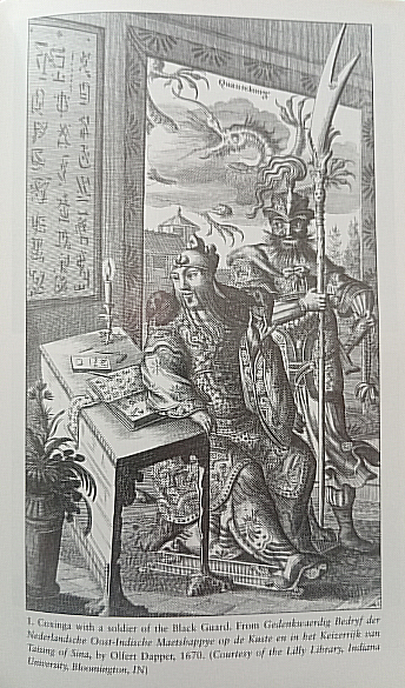
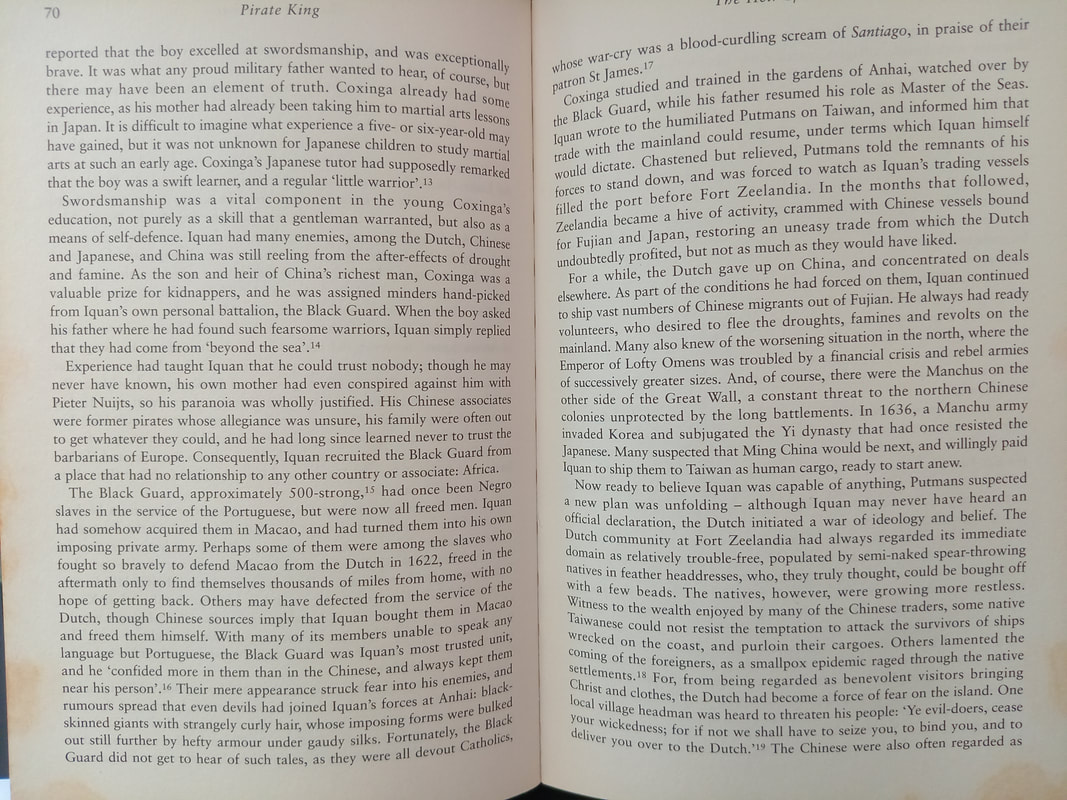
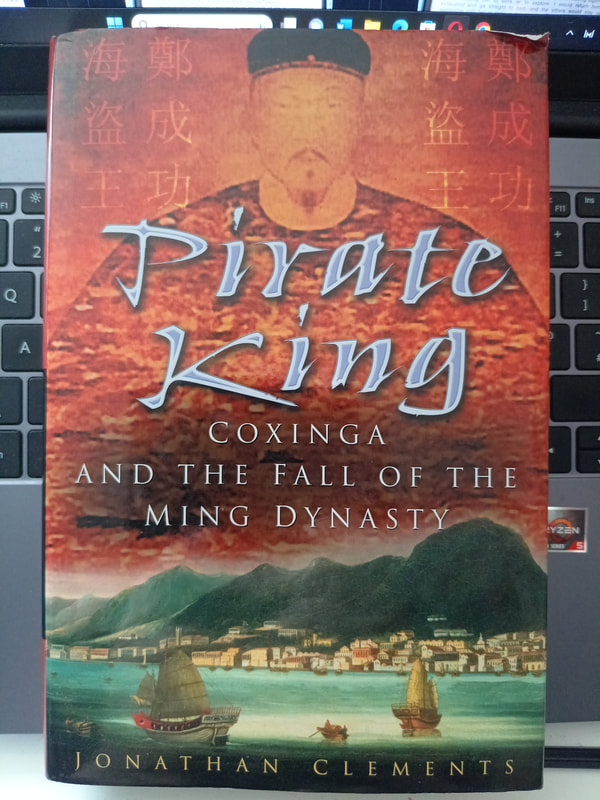
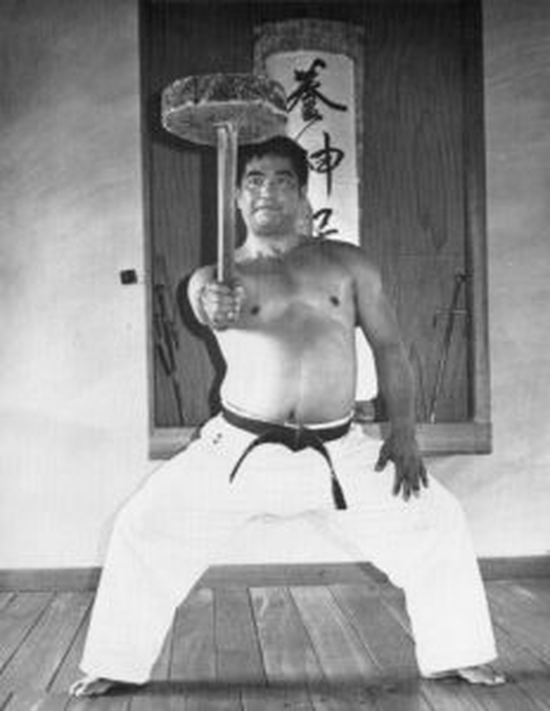
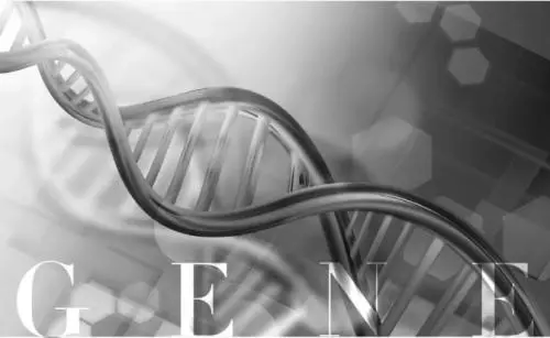
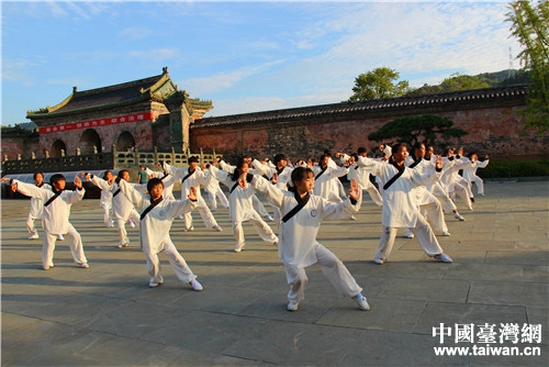
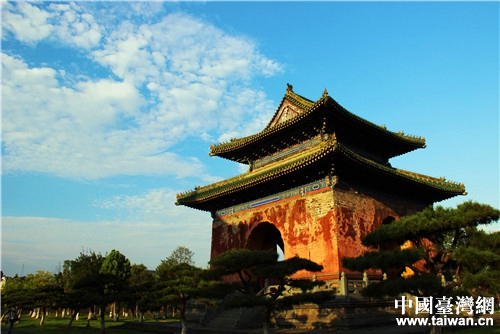
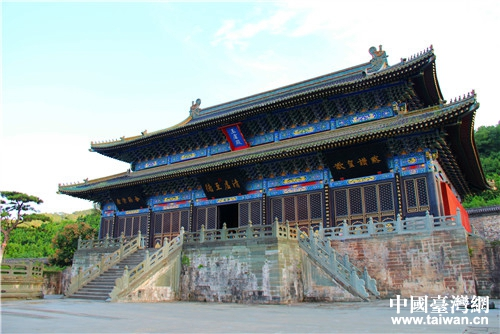
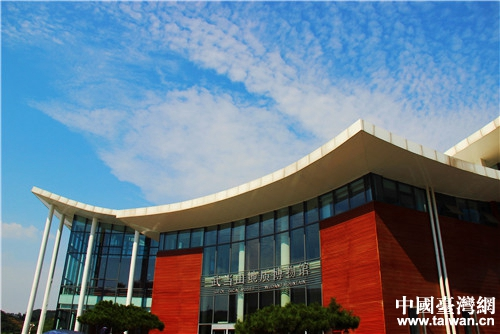
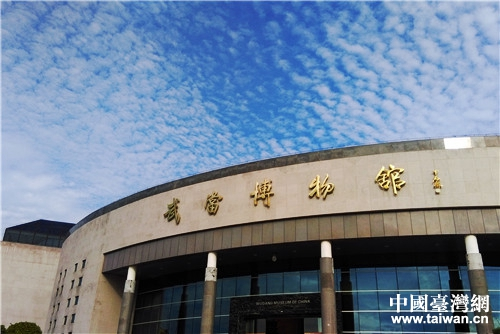
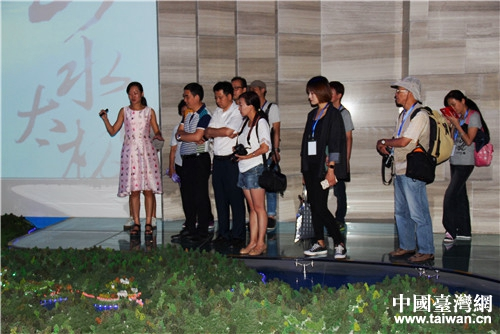
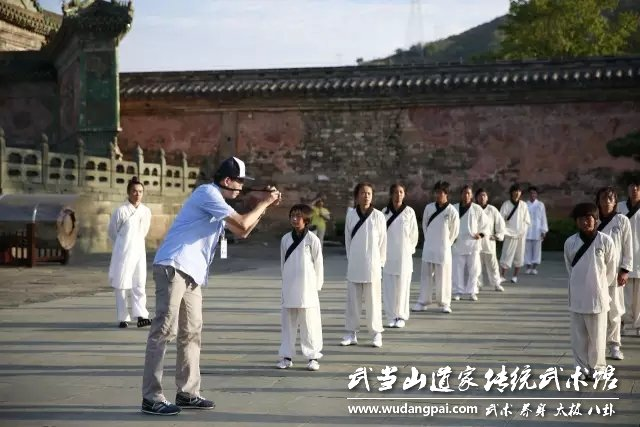
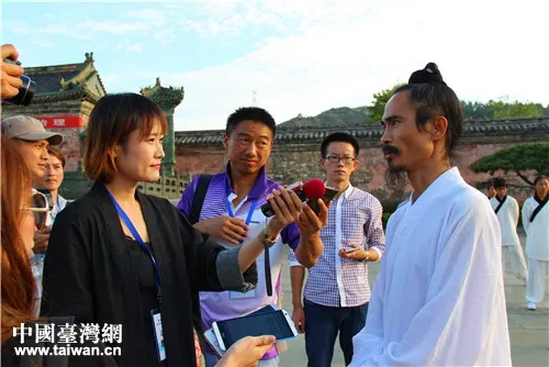
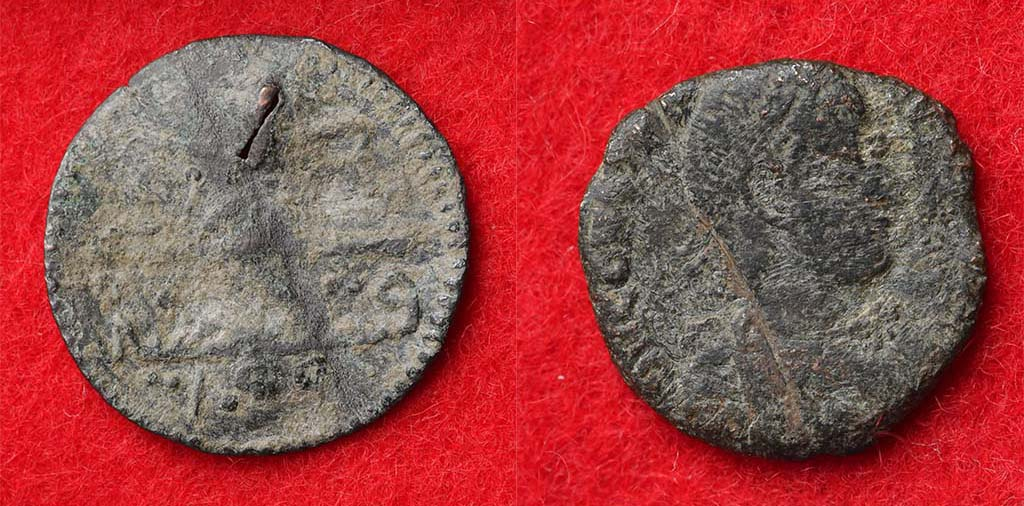
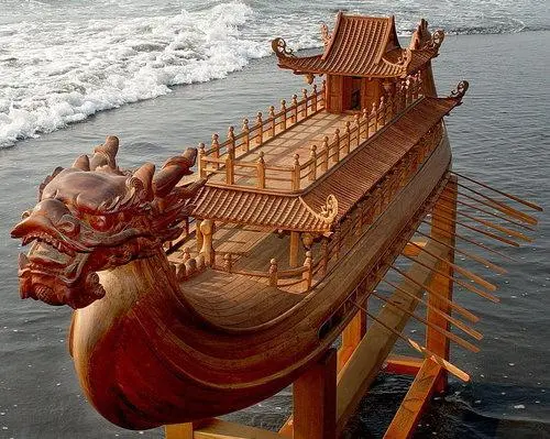


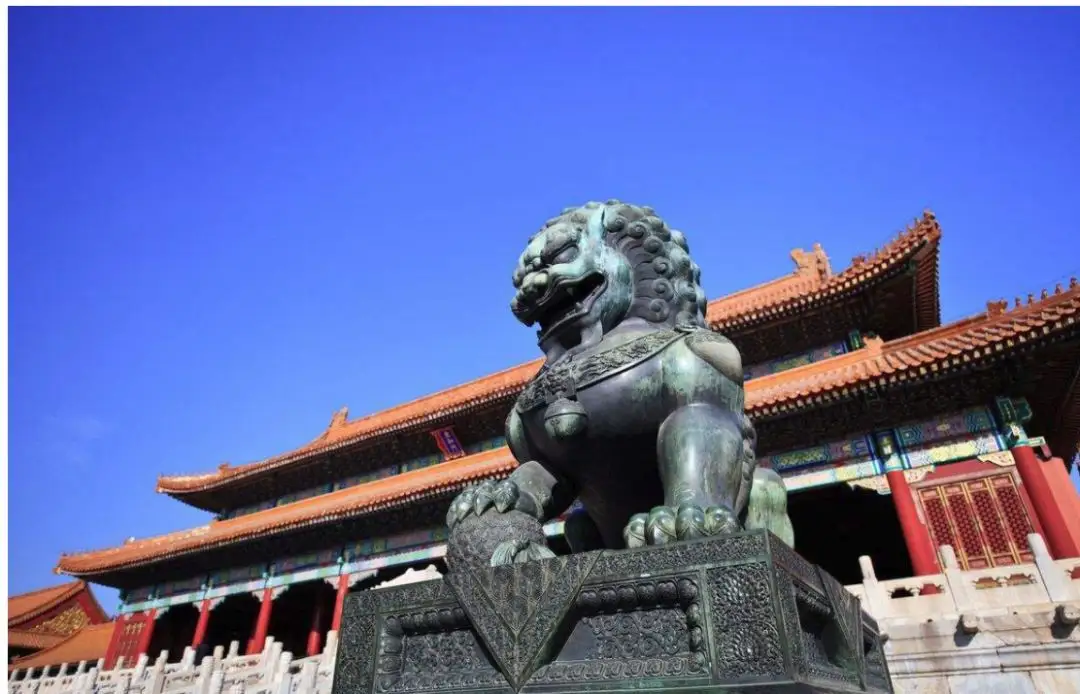
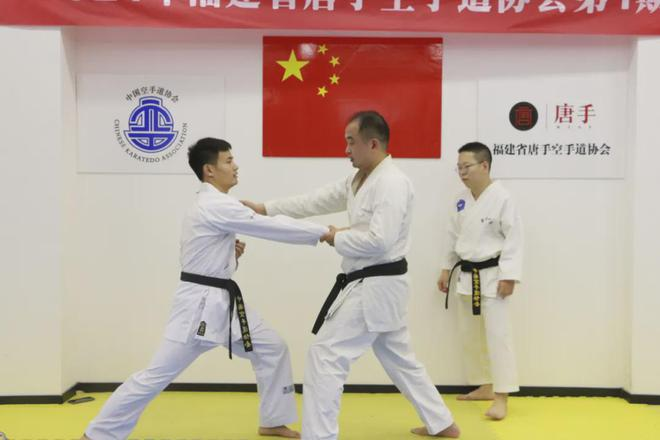
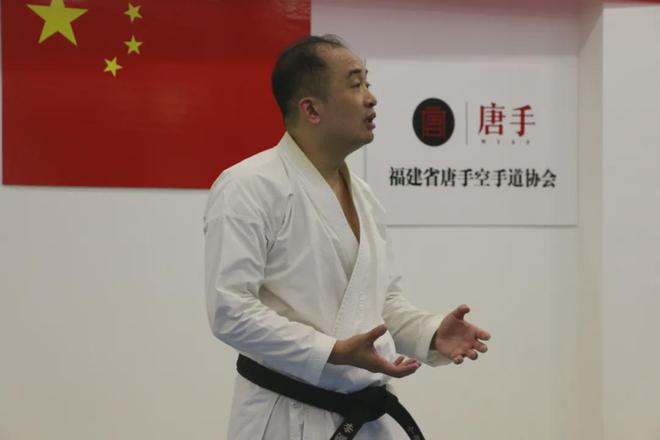
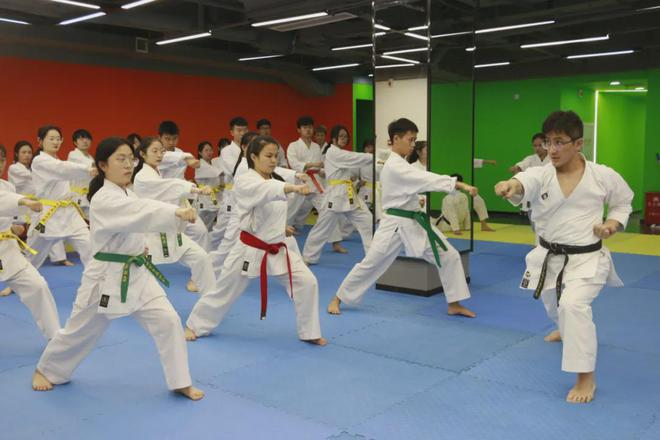
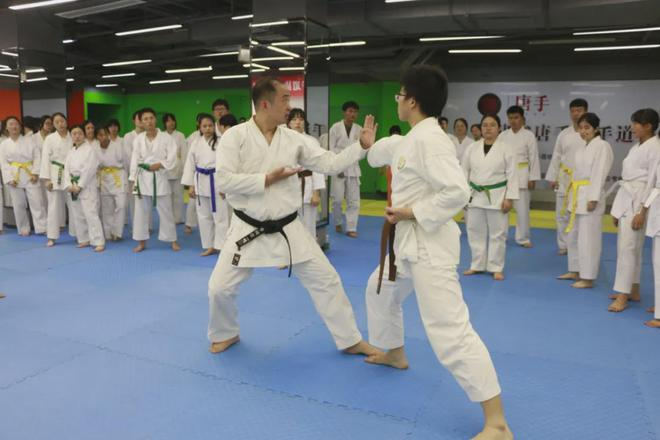
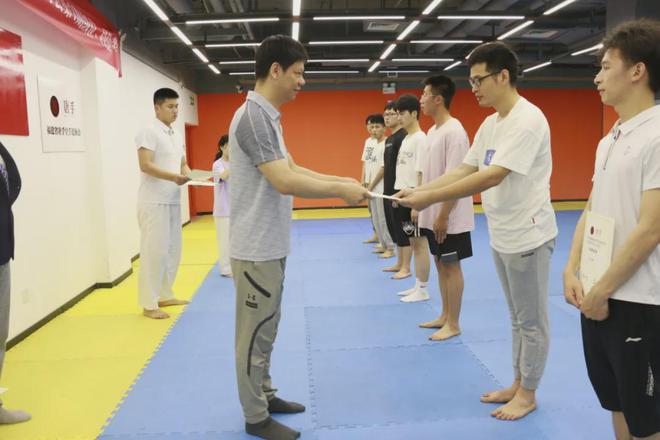
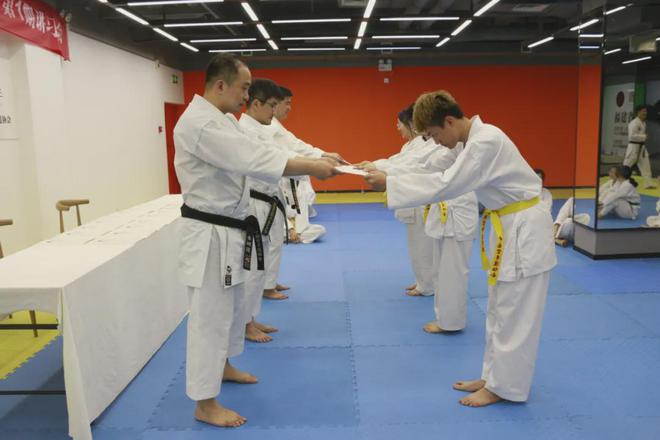
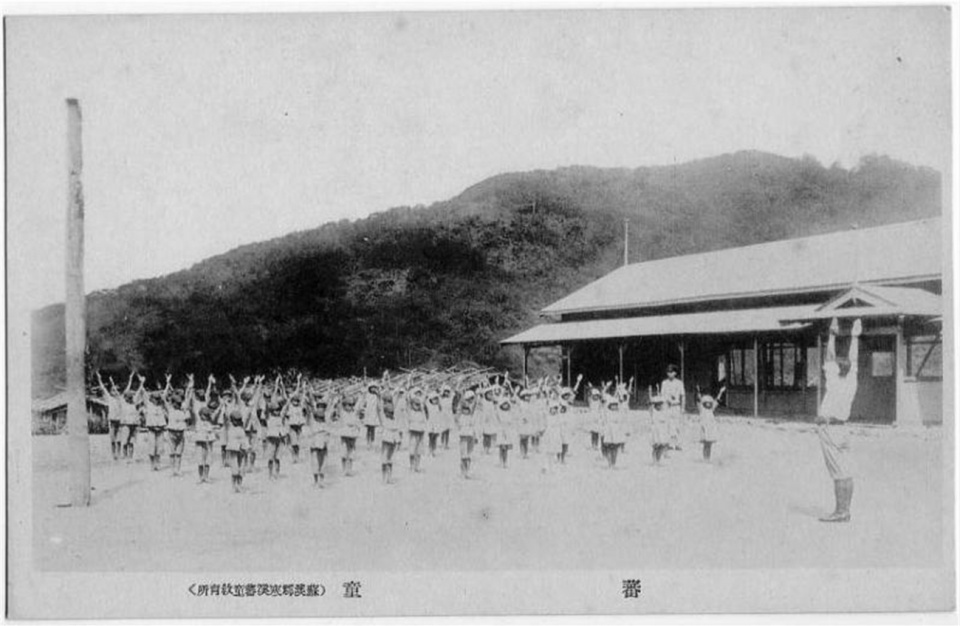
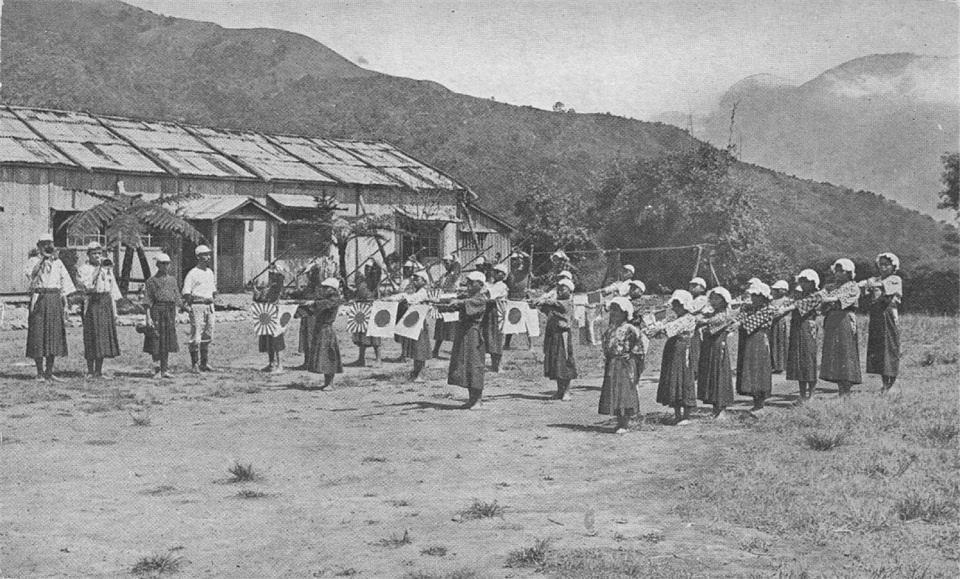

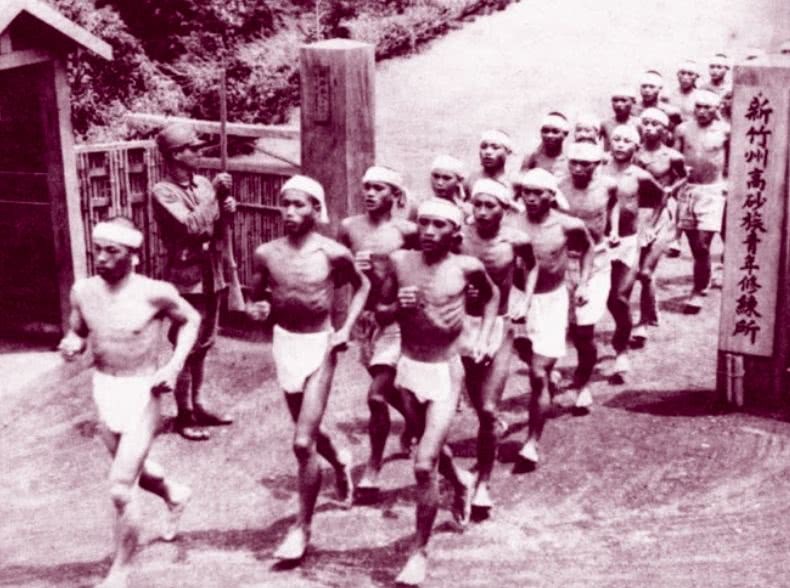
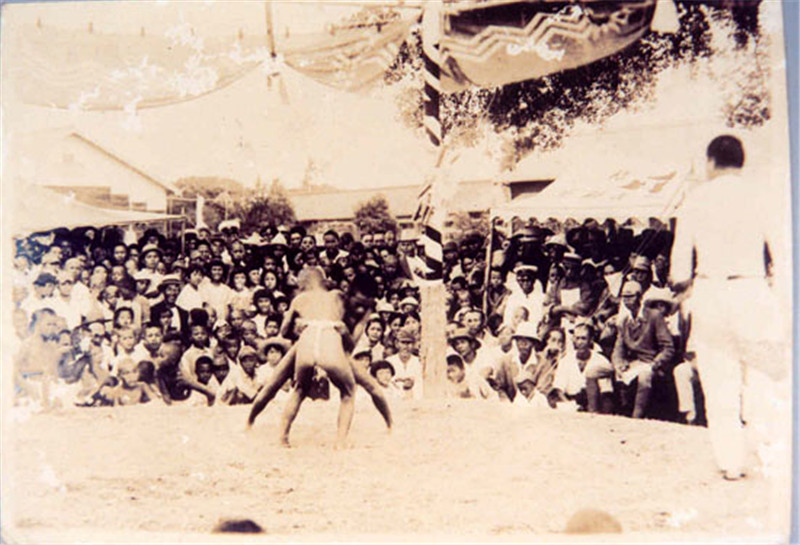

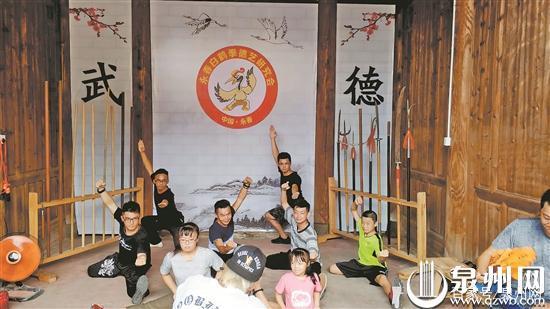
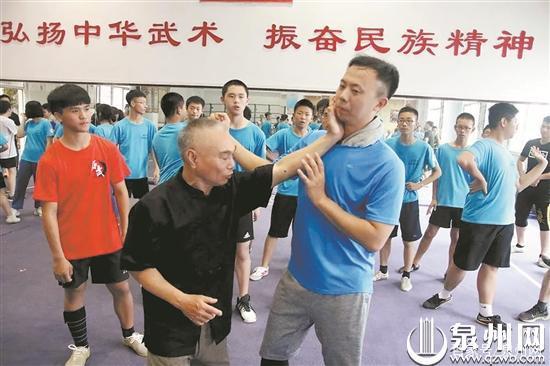
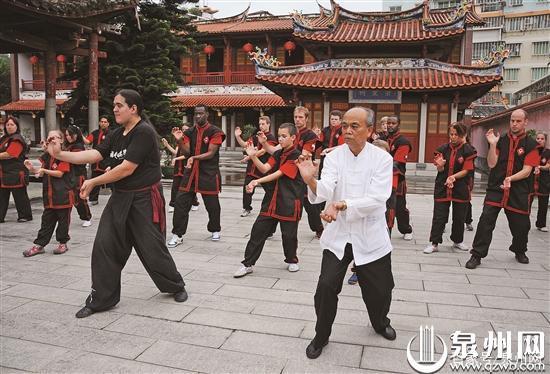
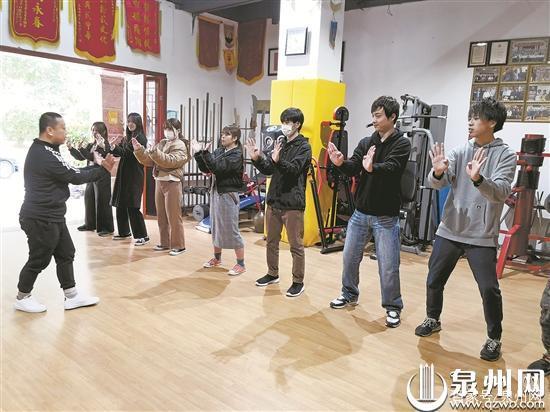
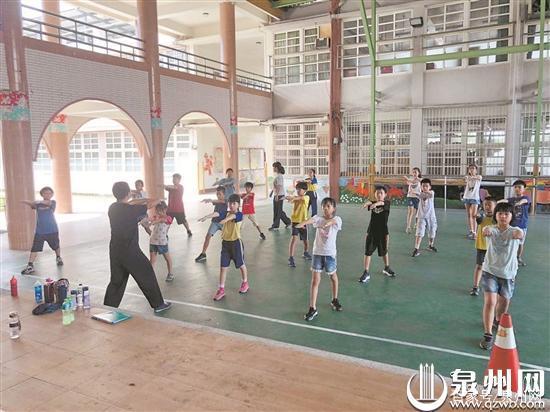
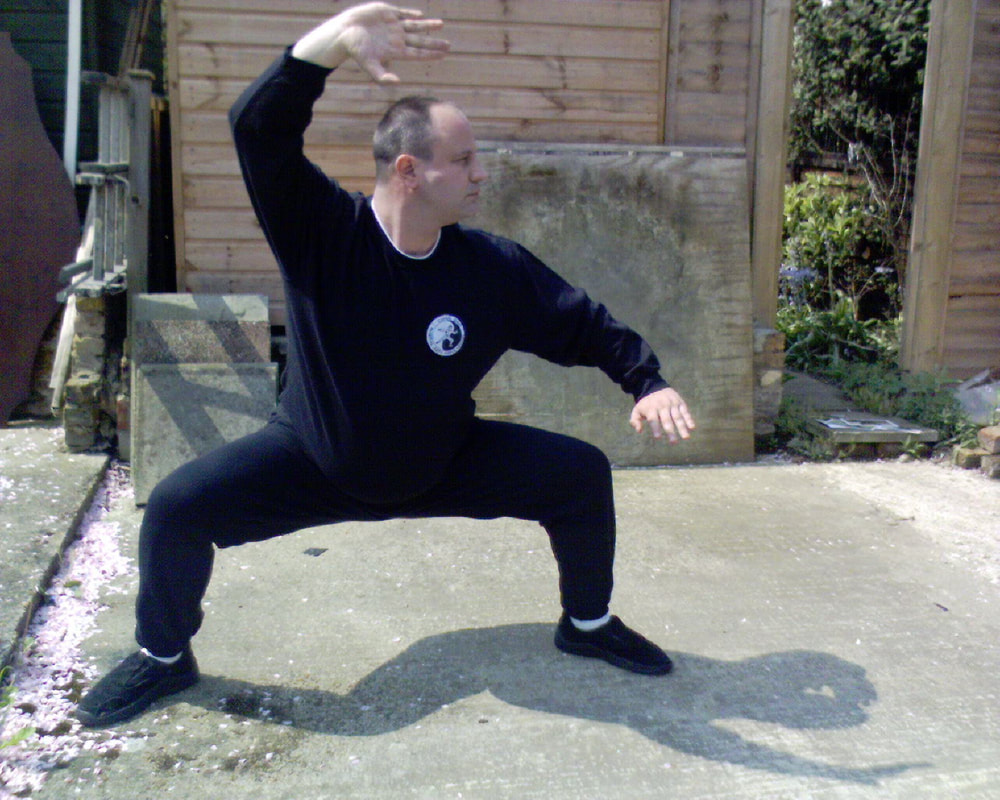
 RSS Feed
RSS Feed